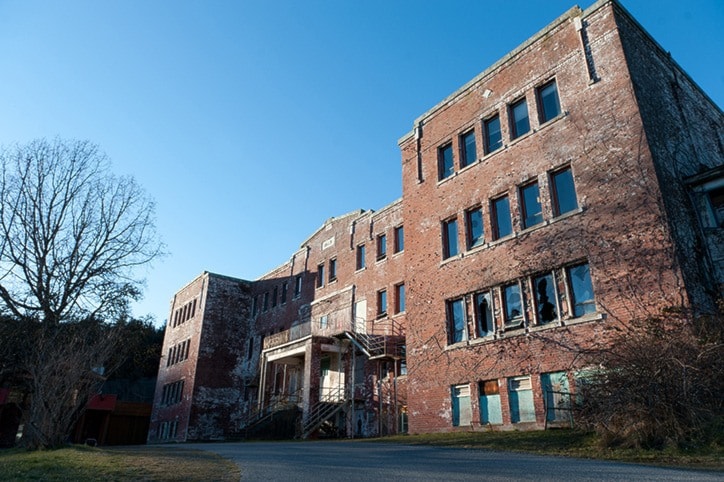ALERT BAY—After casting a shadow over Alert Bay — figuratively and literally — for the better part of a century, the St. Michael's Indian Residential School building is coming down.
The monolithic, four-storey brick structure has loomed over the bay as a stark reminder of one of the darker chapters in the history of colonial relations with Canada's aboriginal peoples. Though vacant for 12 years, except for periodic occupancy by carvers working out of its basement, the building has continued to draw survivors and family members who walk the halls or stand outside as part of personal healing rituals.
And the demolition of the building will be attended by a healing/cleansing ceremony expected to draw hundreds on Feb. 18.
"We want to celebrate the passing of a dark historical time by igniting new hope and optimism through continued healing and the potential for reconciliation," said Verna Ambers, assistant administrator for the 'Namgis Band, whose own mother attended the school for eight years before its closing at the end of 1974. "I think it's going to be a sad time and a happy time. It's going to be very emotional."
The decision to raze the building was approved by the 'Namgis First Nation council last summer, but logistics and protocol dictated that "we sat on it," as Ambers said. "We had to give a lot of consideration to survivors. People often say, 'Oh, it happened a long time ago; let it go.' But it's not that easier for the survivors."
Requests for proposal were submitted late last year, and the contract was expected to be awarded this week, after the Gazetted went to press with its print edition.
The demolition will take an extended period of time, said Wayne Cook, Capital and Housing Coordinator for the 'Namgis.
"Asbestos remediation, that's the first part," said Cook. "Then we'll have the demolition, and the final part is soil remediation. We're working toward having it done by March 31, but that's a best-case scenario."
The 'Namgis have no plans to rebuild on the location. Ambers said part of the property would be given over to parking for the adjacent U'mista Cultural Centre. Some of the bricks will be retained for the construction of a prospective memorial, though the type and timeframe of the memorial have not yet been determined.
The building and adjoining property was transferred in 1975 to the 'Namgis First Nation. It then housed the band offices, along with a North Island College campus and health services treatment centre, along with a cafeteria and even a cabaret lounge in the basement, for more than two decades. In 2003 it was renamed 'Namgis House, though it never shook its identity as St. Michael's Indian Residential School.
"When we had the treatment centre there, one of the healing issues was people wanting to walk into building and experience that again," said Ambers, who worked there when it housed the Band offices. "You'd be working and hear people screaming and crying. We asked the treatment centre to let us know when people were coming in, because we didn't always know what was happening."
But the building proved too expensive to keep up, however, and tenants eventually drifted away.
"Initially, we thought we could save that building," said Ambers. "But every year it ran a deficit, and it got out of hand."
When the current 'Namgis administrative building was completed earlier this century, St. Michael's was finally abandoned. Since then, it has deteriorated dramatically. A flood resulting from burst water pipes on the upper floor five years ago drove the last carvers from the basement, and the building has now become a health and safety concern.
"The inside walls are collapsing and one outside wall is bulging, so it's starting to become a dangerous place," Ambers said. "No matter how many times we board it up, the kids keep getting in there."
The residential school in Alert Bay was actually established by the Anglican Church in 1982. When St. Michael's was constructed by the government in 1928, with room for 200 live-in students, it was the largest of the schools under Anglican administration.
The residential school concept has since come under criticism for forcing students to surrender their native language and other cultural attributes.
Mike Willie and Kodi Nelson, joint proprietors of the aboriginal SeaWolf Adventure Tours, have made St. Michael's a focal point since beginning their award-winning aboriginal tourism venture since beginning operation in 2013.
"There are some who believe that once it's gone, people will forget what happened here," Nelson said while addressing a tour group in front of the school in 2014. "They'd like to make it a museum. (But) we are rising from all this. And we will rise."
